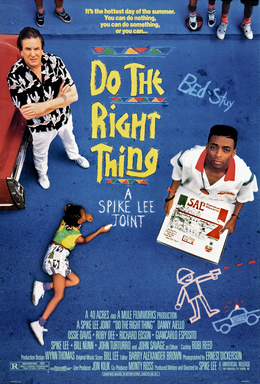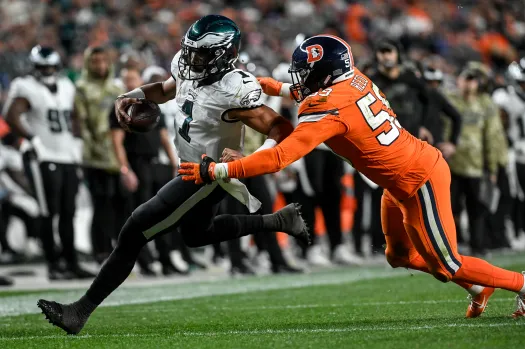In Spike Lee’s “Do the Right Thing,” the viewer is given an honest look into the reality of being Black in America, and the many ways in which race and class affect all aspects of life.
We are introduced to an Italian pizzeria in a Black neighborhood in Brooklyn on a hot summer day. The initial conflict arises when Sal, the owner of Sal’s pizzeria, refuses to honor a request from Buggin’ Out, a regular customer and member of the local community, that Sal include Black people on the Wall of Fame. Throughout the movie, the viewer is presented with an uncommon portrayal of an urban, Black neighborhood: this neighborhood, though fraught with disagreement and cynicism, has a strong sense of community between every resident. As the day gets hotter, residents in the community spend time keeping cool through lighthearted activities like lounging in the shade, eating ice cream, and frolicking in water from the fire hydrant.
However, despite the joy of the day, racial tensions are on the rise beneath the surface. While talking in the shade, Sweet Dick Willie, ML, and Coconut Sid discuss the local businesses. They realize that the two most popular businesses, both heavily patronized by the community’s Black residents, are owned by non-Black people. Around the same time, Radio Raheem is refused service by Sal because he is playing rap music, and Sal’s son Pino reveals himself as a proud racist. Da Mayor opens up about the poverty from his family’s past, which has led to his alcoholism. As these imperfections are revealed, the imbalance in power in the community and the relationship between Sal, his sons, and the local community is revealed to be rather one-sided in its kindness and respect, as it becomes apparent that they are somewhat ashamed to be considered part of the community. By the end of the movie, the racial tensions in the community reach their apex, and the viewer is given a sharp reminder of the unjust realities for Black communities across America. We never learn whether or not the community receives justice in the end for the atrocities committed against them by the police, but that is not the point, as true justice, one that allows for communities like this one to live freely, does not exist.
Perhaps the best part about this movie is how realistic it is. The conflict and violence of the conclusion is portrayed as something that was not a result merely of the events of the day, but of something much larger and more sinister. Despite the apparent happiness with which many of the characters go about their day, there is always an underlying anxiety that does not truly become clear until the end. The financial and social difficulties of a Black community which feels the ever-growing presence of a richer and whiter class are subtly depicted through the actions and words of each character. Thus, the neighborhood depicted in the movie becomes a representation of racially segregated and economically struggling communities across America. There is not much that the characters can do except for to continue on, until the climax, when each character attempts to make themselves known in the cold system to which they are subject to.
Each character is complex and multifaceted, with qualities both good and bad, making each one relatable (to varying degrees) and thought-provoking. Spike Lee’s Black characters are portrayed as real people, not as stereotypes, and not with a white audience in mind. The characters are frequently in opposition because of their generational, gender, and ideological differences. The community’s sense of safety is shattered by the police, but the characters nonetheless persevere, leaving the viewer to wonder whether that safety ever existed to begin with.








